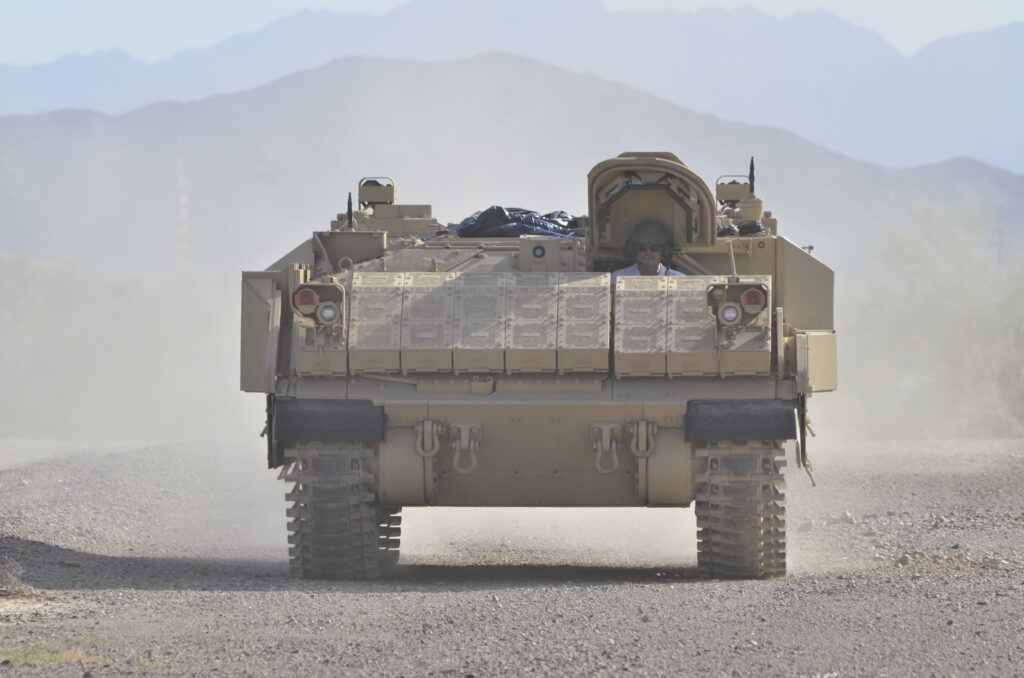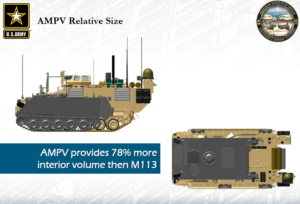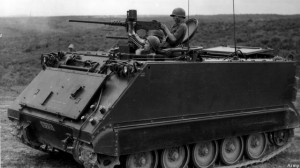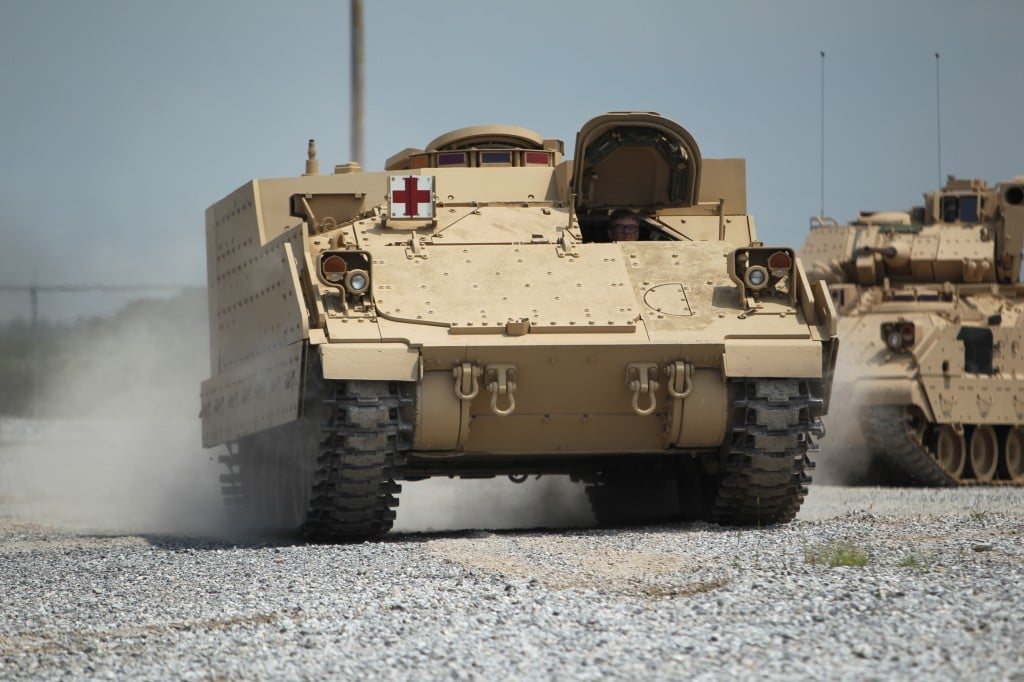Army AMPV On Track To Enter Production, Early!
Posted on
AUSA: It doesn’t really seem possible, but there’s a large Army program, the Armored Multi-Purpose Vehicle, that is 90 days ahead of schedule. Built by the tank mavens at BAE Systems, AMPV got a green light from testers and the official decision to begin mass production expected in less than six weeks.
Why does this matter? A modernized but less heavily armed variant of the M2 Bradley infantry fighting vehicle, the AMPV is a well-armored, all-terrain workhorse that will replace geriatric M113s in a host of roles from battlefield transport to armored ambulance to mobile command post. The M113 first saw action in Vietnam, was fairly poorly protected even at the time, and is completely outclassed by modern Russian anti-tank weapons.
The AMPV “performed very well” in its Limited User Test at Fort Hood, which finished last week, Col. Mike Milner, the Army’s program manager, told several reporters today at the AUSA annual conference. The test results will not be officially complete until the end of the year, but as long as the program doesn’t see any unexpected showstoppers Milner plans to go ahead with Milestone C on November 14. That’s the decision to move from Engineering & Manufacturing Development (EMD), the final stage of what civilians call R&D, into mass production.
“I don’t see anything groundbreaking to stop Milestone C,” Milner said. The next big threshold, Initial Operational Test & Evaluation (IOTE) is scheduled for 2021.

Col. Mike Milner, project manager AMPV
The AMPV had experienced some reliability issues, with fuel leaks plaguing seven vehicles. But Milner said BAE was “very quick” in responding to these issues and fixed them.
There are five variants of the BAE Systems-built AMPV: transport, ambulance, mortar carrier, and mobile command post. Of the first batch of 117 vehicles, 52 will be used for testing, with the other 65 heading to Europe as part of the European Deterrence Initiative (EDI). Milner said.
I asked Milner why he was able to get ahead of schedule. He cited the Army’s commitment to “develop requirement that are technically achievable” and hold to them. Again, the AMPV is basically a modernized Bradley without the gun turret, so it’s highly capable but hardly revolutionary. The same basic power plant — engine, transmission, etc. — is also being used in the upgraded Army howitzer, the M109A7 Paladin PIM.
But even evolutionary improvements require tough choices. When the program has encountered problems, Milner said, he’s been able to go straight to three- and four-star leaders in Army, explain to them what trade off needed to be made, and get a decision quickly.
The Army plans to buy 2,897 AMPVs in total — though that figure is just to replace the M113 variants in frontline combat brigades. There are hundreds more in division- and corps-level support units that the Army hasn’t yet made a decision on, but odds are the AMPV will replace them eventually as well.
An important change will come to the program as it moves to faster production after Milestone C. After experimenting with a production line on the first prototypes, the program found it was too short and doubled the length, Milner said.
They’ve added a robotic welder that can handle 80 percent of the vehicle’s critical welds. Why will this make much of a difference? The longest weld, on the belly plate, takes 27 passes for a human to do properly. The robot does it in one.
Subscribe to our newsletter
Promotions, new products and sales. Directly to your inbox.




